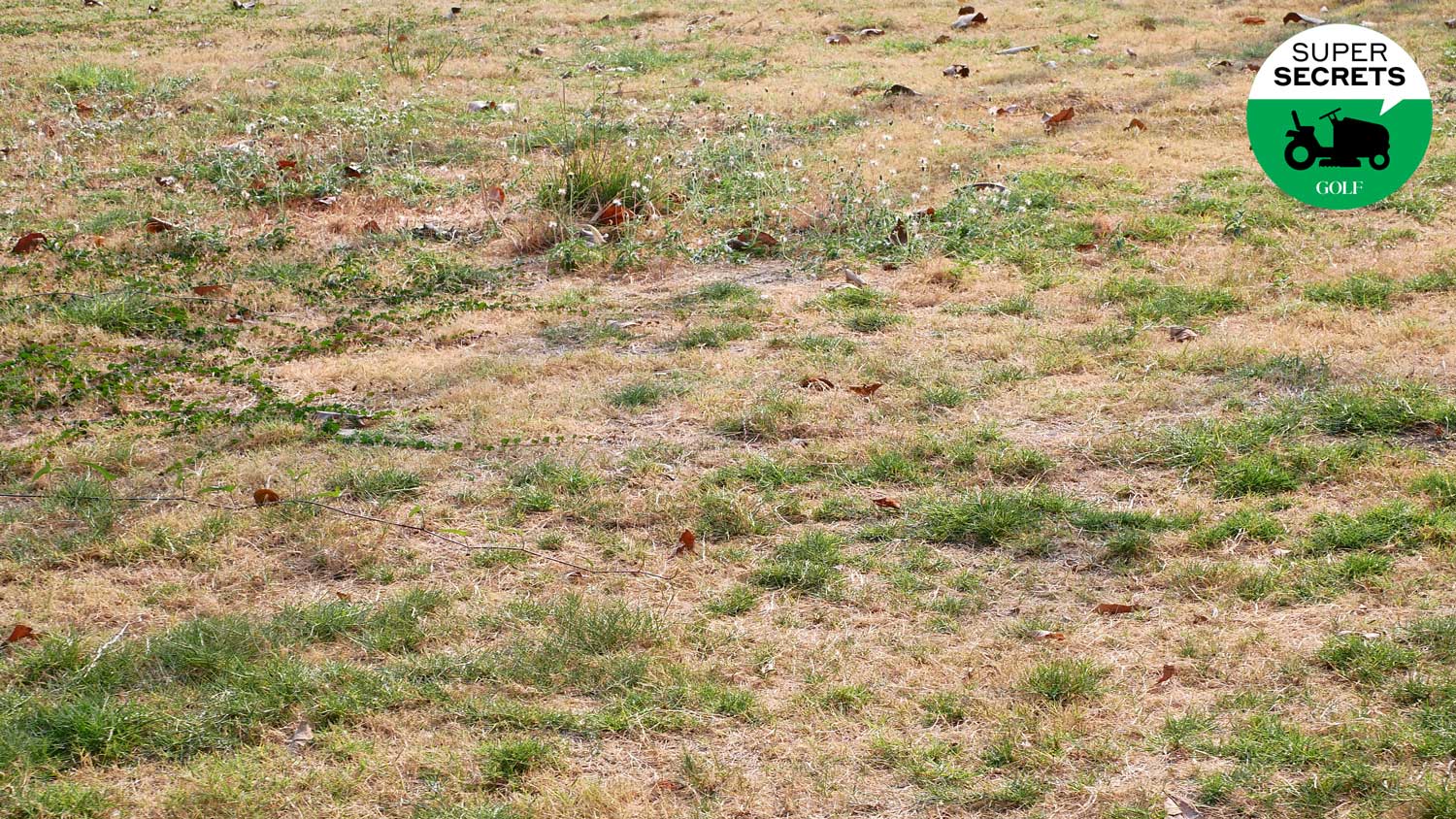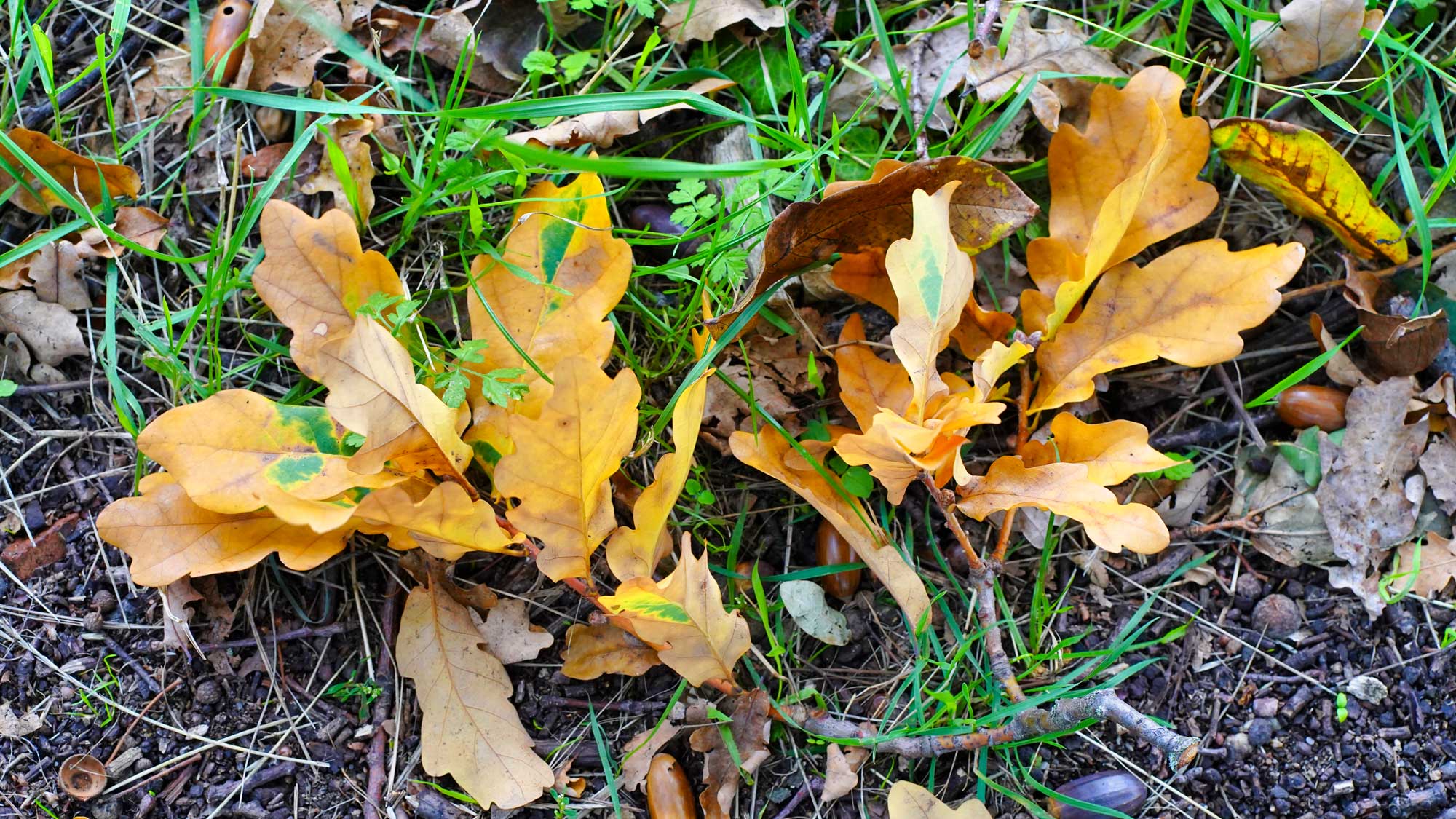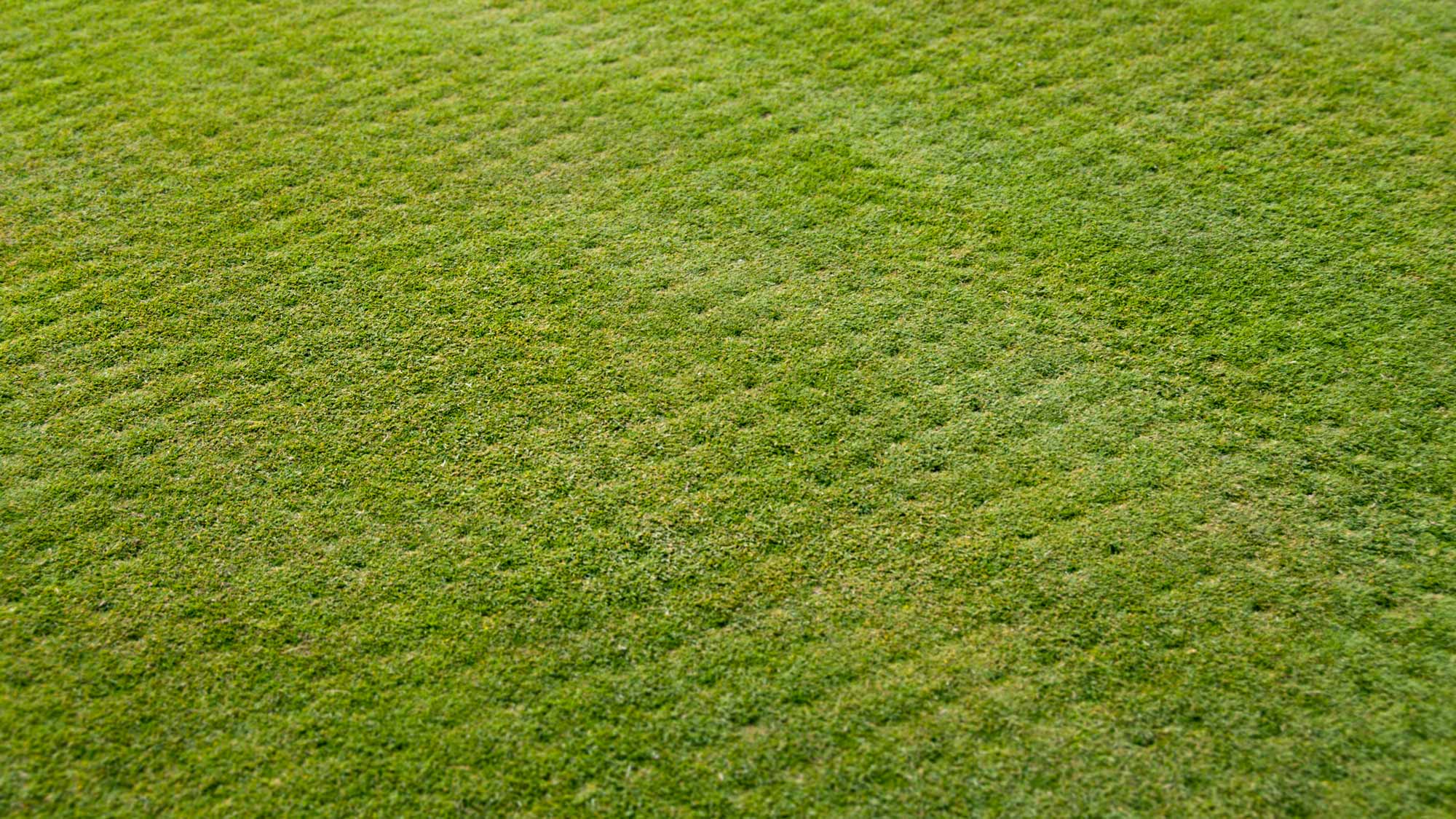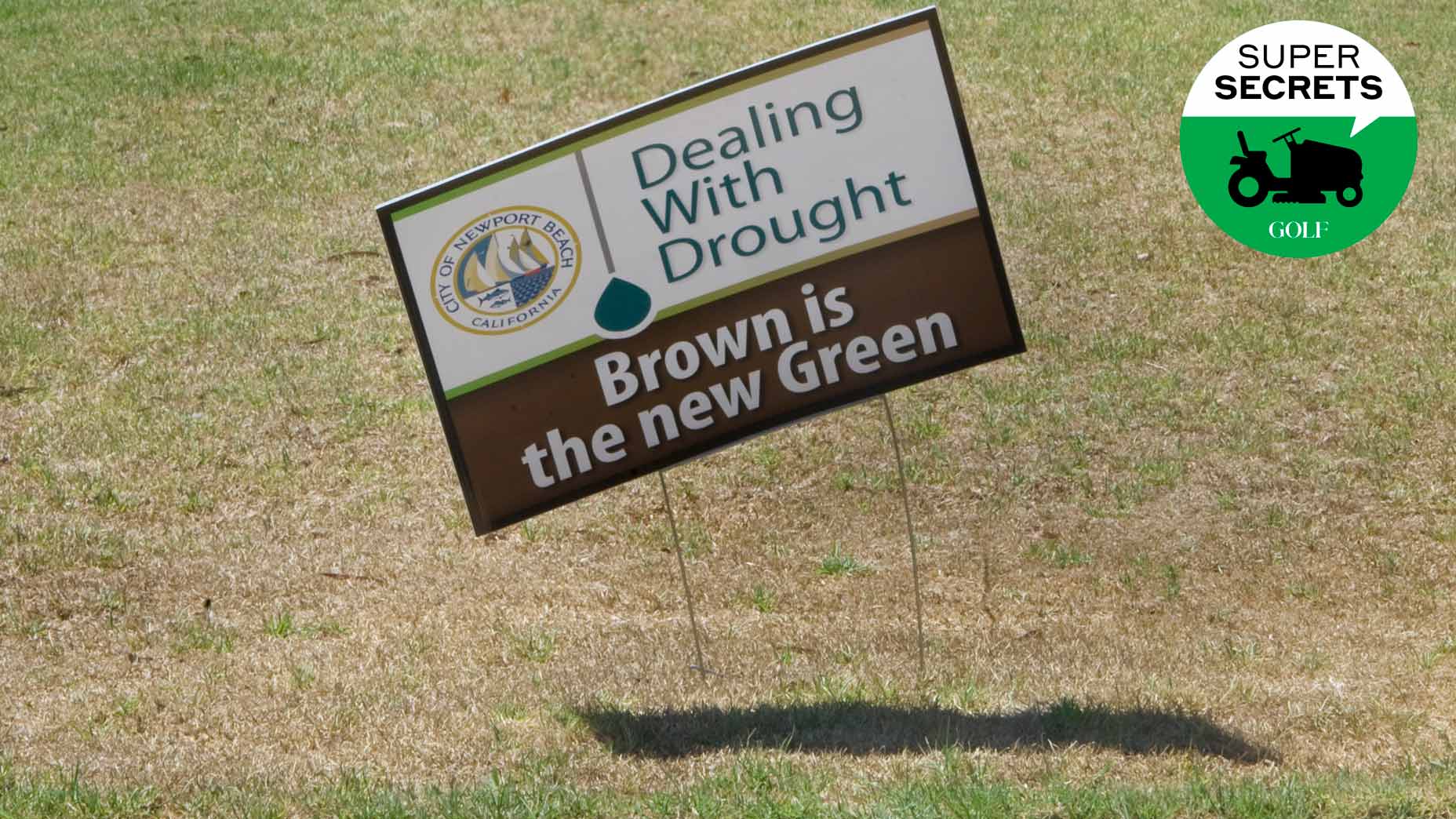Welcome to Super Secrets, a GOLF.com series in which we pick the brains of the game’s leading superintendents. By illuminating how course maintenance crews ply their trades, we’re hopeful we can not only give you a deeper appreciation for the important, innovative work they do but also provide you with maintenance tips that you can apply to your own little patch of paradise. Happy gardening!
An ugly lawn is like an unsightly ball flight: what you see is a symptom of a deeper problem. But how to fix it? That’s the trick. Just as there are swing doctors, so there are turf doctors, like David Phipps. A former superintendent who now serves as Northwest regional representative for the Golf Course Superintendents Association of America, Phipps has come across his share of unhealthy-looking yards.
Here are 7 of his most common diagnoses, along with a few of his recommended cures.
1. You’ve got the wrong grasses
Not all turf is created equal. Different grass varieties have different traits that make them better suited to different climates and soil conditions, to say nothing of different maintenance practices. Suffice to say: make sure you’ve planted a suitable variety to begin with. Beyond that, stay on the lookout for invaders. Often, Phipps says, a discolored patch in your yard is an indication that a combination of inappropriate species has taken off.
5 must-do’s for growing grass in the fall, according to a golf course superintendentBy: Josh Sens
Bentgrass is a common culprit. Though it’s great for greens, it isn’t good for lawns, Phipps says, as it doesn’t take well to taller mowing heights.
The cure: Tearing up the turf and replanting works, but that’s a draconian approach. Though Phipps isn’t big on chemical applications on home lawns, in this instance, he says that the easiest fix is probably a targeted application of an herbicide.
2. You’re overwatering
It’s a far more common problem than under-watering, and it’s often much worse for your grass. “So many homeowners will just set their irrigation systems on a timer and just let them go, rain or shine,” Phipps says. They’re not only wasting water. They’re creating an unhealthy environment for the turf.
How to turn your lawn Augusta green (without overwatering!), according to a superintendentBy: Josh Sens
The cure: Monitor your irrigation system more carefully. Don’t just set it and forget. Depending on your appetite for yard work, you might also switch to hand-watering, which gives you precise control of when and how much your grass gets to drink. Irrigation systems are also subject to leaks, so if you’re using one, make sure it’s not putting water in the wrong places and the wrong times.
3. You’re scalping
Scalping is when you mow so low that you expose the stems of your grass. This can be a beneficial practice if, for instance, you’re looking to start afresh or trying to get rid of excess winter build-up. But over-scalping can cause serious damage to the turf, and even kill it.
The cure: Superintendents abide by the one-thirds rule, which boils down to this: never cut off more than one-third of the grass blade at a time. It’s a good guideline to follow at home, too.
4. You’ve got fungus
There are many kinds with many causes. Among the most common is a disease called fairy ring, which, true to its name, causes circles of discoloration. Fairy ring can ride in on the wind or get introduced via contaminated soil or other organic material. Poor maintenance practices, such as mowing too low, overwatering or over-fertilizing, can create conditions that are ripe for a range of fungal trouble.
The best way to mow your lawn, according to a golf-course superintendentBy: Josh Sens
The cure: When superintendents encounter fairy ring on their greens, they address it quickly with fungicides. Prompt action is required, as fungus creates poor playing conditions, and poor playing conditions are bad for business. A lawn is a different story. Since you’re probably not looking to monetize your yard, there isn’t any urgent economic interest. As a rule, Phipps discourages the use of fungicides at home. The better approach, he says, is to stick to proper maintenance practices and simply let the fungus run its course.
5. You’ve got bad soil
Maybe it’s rocky. Or salty. Or overly compacted with poor drainage. Bottom line: if your lawn looks unhealthy, there’s a decent chance the problem lies underneath.
The cure: Do a bit of amateur investigation. If your soil seems compacted, aerate it. If it’s rocky, replace it with well-tilled, nutrient rich earth. If can’t identify the problem with confidence, Phipps suggests getting expert help, whether from a lawn-care company or a soil scientist at your local county extension services.
Should you aerate your own lawn? A golf superintendent explains.By: Josh Sens
6. You’ve over-fertilized
Just as over-eating is bad for your health, over-feeding your lawn is bad for your grass. It scorches the plant, leading to burnt-out lines and patches.
The cure: If you used granular fertilizer and you catch the problem early, you might be able to sweep or rake some of it away, or flush or dilute it with a generous watering. But the best cure is preventive: read the directions carefully and make sure that you’re applying the right amount of fertilizer at the right time.
7. You’re not cut out for this
The surest way to end up with an ugly lawn is to not maintain it, Phipps says. If, on the other hand, you follow basic recommended practices, “your lawn is probably going to be just fine.” Take a hard look at your yard, and then yourself. Are you sure you’re up for this?
The cure: Go with a rock garden. Or a succulent garden. Or some other low-maintenance patch of ground. There are plenty of aesthetically pleasing options that don’t involve growing and caring for grass. There’s no law that says you’re required to have a lawn.














